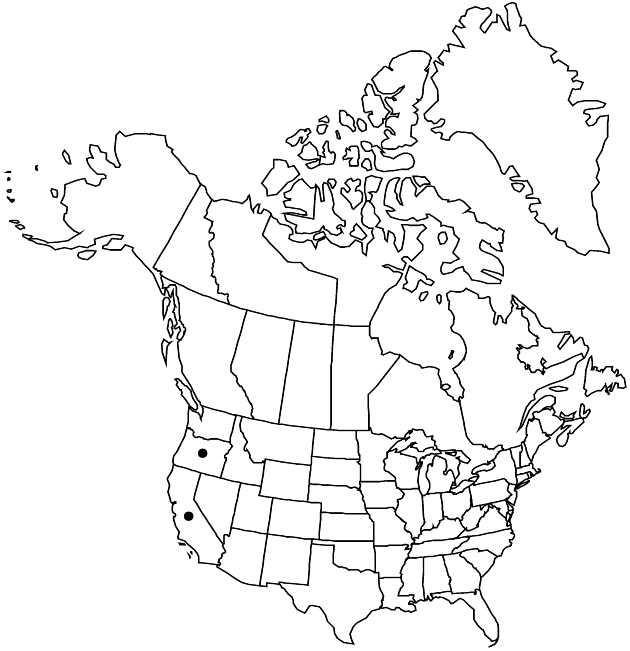Hesperevax sparsiflora
Fl. Francisc., 402. 1897.
Plants 2–17 cm. Stems 1–10, ascending to erect (rarely 0); branches 0 or proximal. Leaves mostly cauline, petiolate, distal scarcely congested, ± equal to proximal, largest 6–32 × 3–8(–10) mm; petioles: lengths 0.9–1.5 times blade lengths, bases thickened, cartilaginous to ± indurate; capitular leaves 1–4 per glomerule or head, approximate, not whorled, ascending to erect, some sometimes grading into pistillate paleae (by reduction of blades, expansion of petiole bases). Heads terminal in loose glomerules (3–4 mm diam.) of 3–5 mixed with leaves and some borne singly in axils, cylindric, 3–4.5 × 1.5–2 mm, heights 1.8–2.5 times diams. Receptacles distinct, 1.4–1.8 × 0.2–0.4 mm. Pistillate paleae in 1–3 series, spirally ranked, oblanceolate, 2.5–4.5 mm. Staminate paleae not or scarcely surpassing pistillate, 1.1–1.8 mm, lengths 0.3–0.4 times head heights; apices ± erect. Functionally staminate florets 2–5; corollas 0.8–1.1 mm. Cypselae mostly 1–1.7 mm.
Distribution

sw United States.
Discussion
Varieties 2 (2 in the flora).
The varieties of Hesperevax sparsiflora occur in distinct habitats and might be treated as separate species but for some morphologically intermediate specimens from areas of sympatry in the San Francisco Bay area.
Selected References
None.
Key
| 1 | Largest leaves (10–)13–32 × 4–8(–10) mm, blades broadly oblanceolate to obovate, arachnoid-seri- ceous | Hesperevax sparsiflora var. sparsiflora |
| 1 | Largest leaves 6–12(–14) × 3–5(–6) mm, blades ± round, ± densely lanuginose | Hesperevax sparsiflora var. brevifolia |